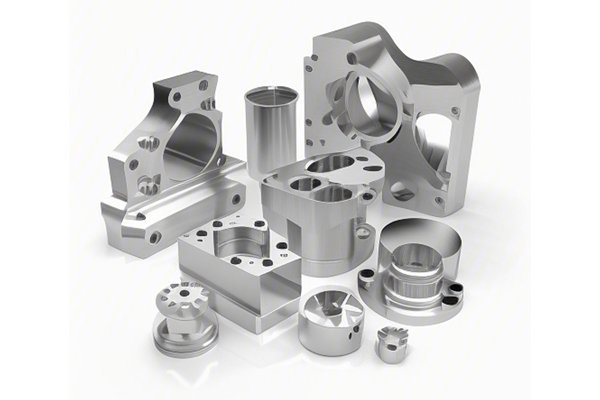Opening:
Did you know that CNC machining has transformed conventional manufacturing methods, helping businesses save up to 30% on production costs? As technology advances, companies are increasingly turning to CNC (Computer Numerical Control) machining to create high-quality parts efficiently and economically. With its ability to produce complex components with precise tolerances, CNC machining stands as a pivotal solution in today’s fast-paced manufacturing landscape. The question remains: how can CNC machining strike a balance between cost-effectiveness and uncompromising quality?
Understanding CNC Machining:
CNC machining involves the use of computer software to control machine tools for precise fabrication of parts and components. By automating processes like drilling, milling, and turning, CNC machining minimizes human error and maximizes efficiency. As industries seek to optimize production, the demand for CNC machining solutions continues to rise, particularly for applications requiring high-quality standards.
The Cost-Effectiveness of CNC Machining:
CNC machines require fewer operators than traditional machining methods—saving labor costs while increasing productivity. Modern CNC machines can run autonomously, requiring minimal human supervision, which allows companies to allocate resources to other critical areas of the business.
One of the remarkable benefits of CNC machining is its precision. By meticulously feeding data into the CNC milling or turning machines, material waste is heavily reduced. This waste reduction results not only in cost savings but also aligns with sustainability goals that many companies adopt today.
CNC machines can execute complex designs faster than manual machining. Quick turnaround times enable manufacturers to respond rapidly to market demands, reducing lead times and enabling quicker product launches. This agility allows for effective capitalizing on business opportunities while optimizing inventory levels.
Cost-effective prototyping is one of CNC machining’s standout features. With rapid prototyping capabilities, businesses can produce and revise parts quickly, leading to reduced time and expenditure during the product development phase. This flexibility allows businesses to iterate designs without the significant costs associated with traditional molds or tooling.
Ensuring Quality with CNC Machining:
Despite its cost-saving advantages, quality assurance must be a priority when adopting CNC machining. Here are several strategies that CNC machinists employ to maintain high-quality standards:
CNC machining can achieve incredibly tight tolerances—often within +/
Many CNC machining facilities implement stringent quality control measures. These include regular inspections at various production stages, use of advanced measurement tools, and adherence to quality management systems (QMS) like ISO

Proper material selection plays a crucial role in ensuring the quality of machined components. CNC facilities often carry out compatibility tests to determine how well different materials hold up during machining. This testing helps mitigate risks associated with material deformation or failure, ensuring that end products meet quality expectations.
The surface finish of parts can directly impact their functionality and aesthetic appeal. CNC machining allows for various finishing options, including anodizing, polishing, and plating, which can enhance the part’s durability and surface properties. By offering a range of finishes, manufacturers can meet specific customer requirements and industry standards.
Balancing Cost and Quality: Practical Solutions:
Achieving a balance between cost-effectiveness and high-quality output in CNC machining requires thoughtful strategies that incorporate the best practices mentioned above.
By providing thorough training to CNC operators, companies can ensure that processes are understood and followed correctly, reducing the likelihood of errors. A well-trained workforce is integral to maintaining both efficiency and quality.
Implementing a proactive maintenance schedule can keep CNC machines in optimal working condition, preventing breakdowns and delays that could drive up costs. Regularly inspected and maintained machines can produce consistent outputs, further enhancing quality.
Employing the latest CNC technology can yield more cost-effective and quality outputs. High-speed machining, for instance, can lead to reduced cycle times and improved surface finishes, helping businesses remain competitive in their respective markets.
Partnering with material suppliers who understand the requirements of CNC machining allows for better material selection and sourcing. Suppliers can often provide valuable insights into the best materials for specific applications, helping streamline the process and reduce costs.
Emphasizing Quality in Cost Strategies:
While engaging in cost-effective manufacturing practices, it’s essential that businesses do not compromise on quality. Building a culture of quality consciousness among employees and leveraging technology to enhance precision can drive sustainable growth. The integration of automation in CNC machining contributes to operational efficiency but also corresponds with maintaining high standards.
:
In conclusion, CNC machining provides a level of precision and consistency that is hard to match with traditional manufacturing methods. By reducing labor costs, minimizing material waste, ensuring rapid prototyping, and implementing stringent quality controls, CNC machining emerges as a cost-effective solution for producing high-quality parts.
As industries continue to embrace cutting-edge technologies, the relevance of CNC machining in maintaining both cost-efficiency and quality assurance cannot be overlooked. Companies looking to thrive must consider thoroughly how they integrate CNC machining into their production processes, ensuring that they can meet the demands of the market while maintaining standards of excellence.
CNC machining is not just about cutting materials—it’s about shaping the future of manufacturing where cost-effective solutions seamlessly coexist with uncompromising quality. As we move forward, reflecting on the importance of aligned technologies and strategies can empower businesses to innovate and succeed in an ever-evolving industry landscape.
Related Posts
- What Are the Benefits of Custom CNC Parts Machining Services for Your Business Needs?
- Here is a question-style FAQ title based on your keyword list: How to Analyze the Cost of Laser Engraving and Chemical Etching in CNC Machining Effectively?
- How can CNC machining improve the efficiency of small batch and multi-variety production processes?






